How to get there
For the guests of the Wakatobi Dive Resort (WDR) the journey to Tomia is very easy. After arrival in Indonesia you get on a plane in Bali and after a short flight to Tomia you arrive at the (still) private airport of the resort.
All other visitors to the island have to travel the hard way: They have to use the uncomfortable local ferries and therefore need considerably more time to get there. If you are in a hurry, you can also charter a boat to get from one island to the next.
The owners of the Wakatobi Dive Resort strictly refuse to take other tourists to the island,
All other visitors to the island have to travel the hard way: They have to use the uncomfortable local ferries and therefore need considerably more time to get there. If you are in a hurry, you can also charter a boat to get from one island to the next.
The owners of the Wakatobi Dive Resort strictly refuse to take other tourists to the island,
Pictures from the journey to Tomia
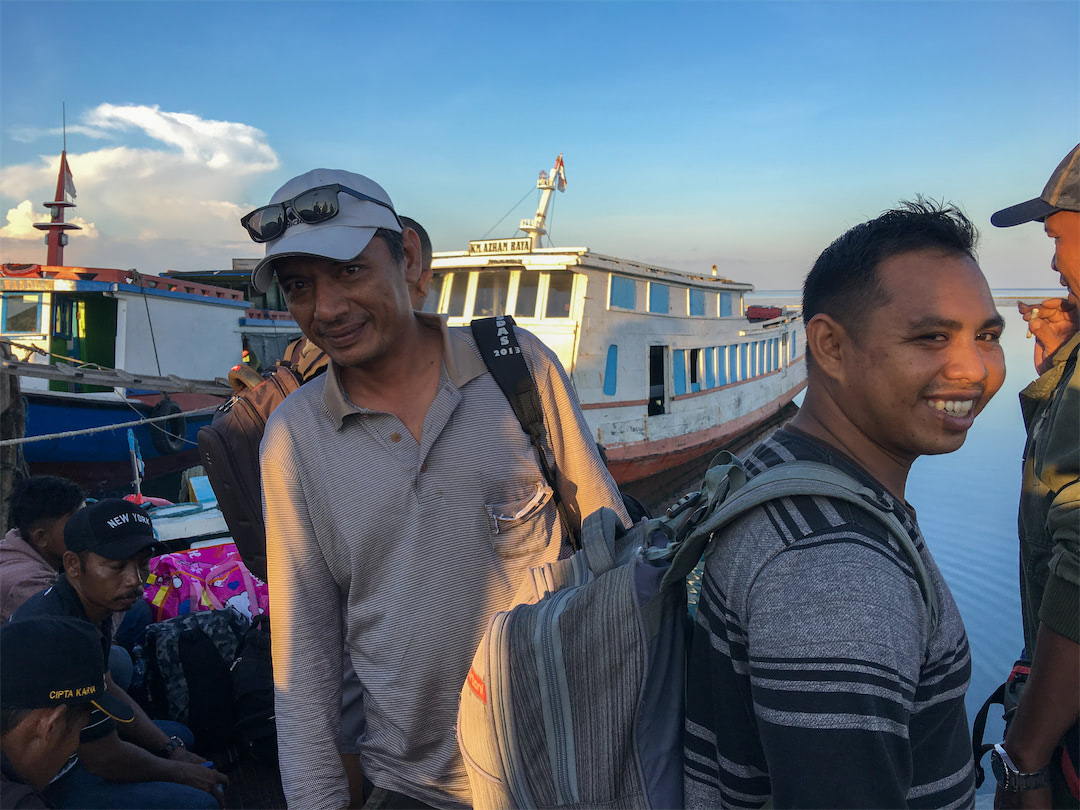
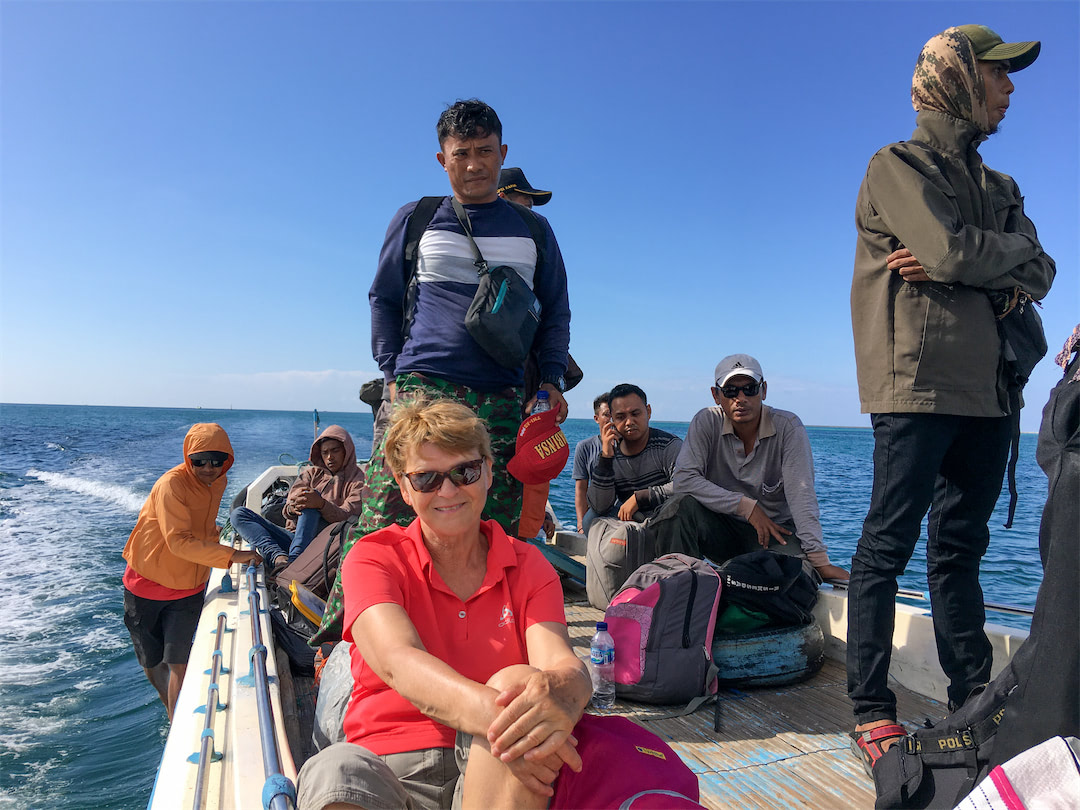
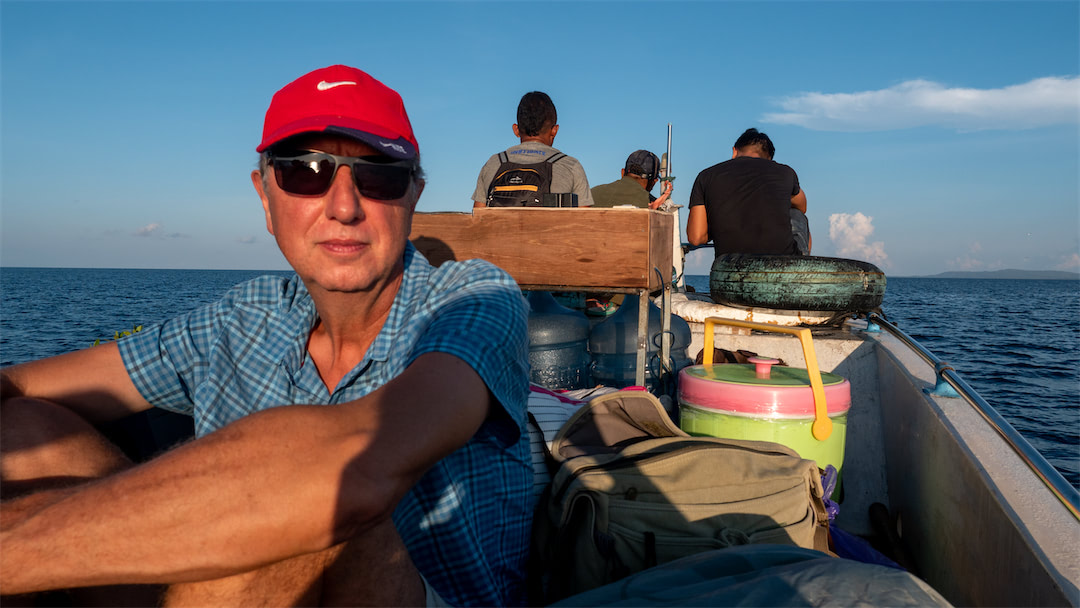
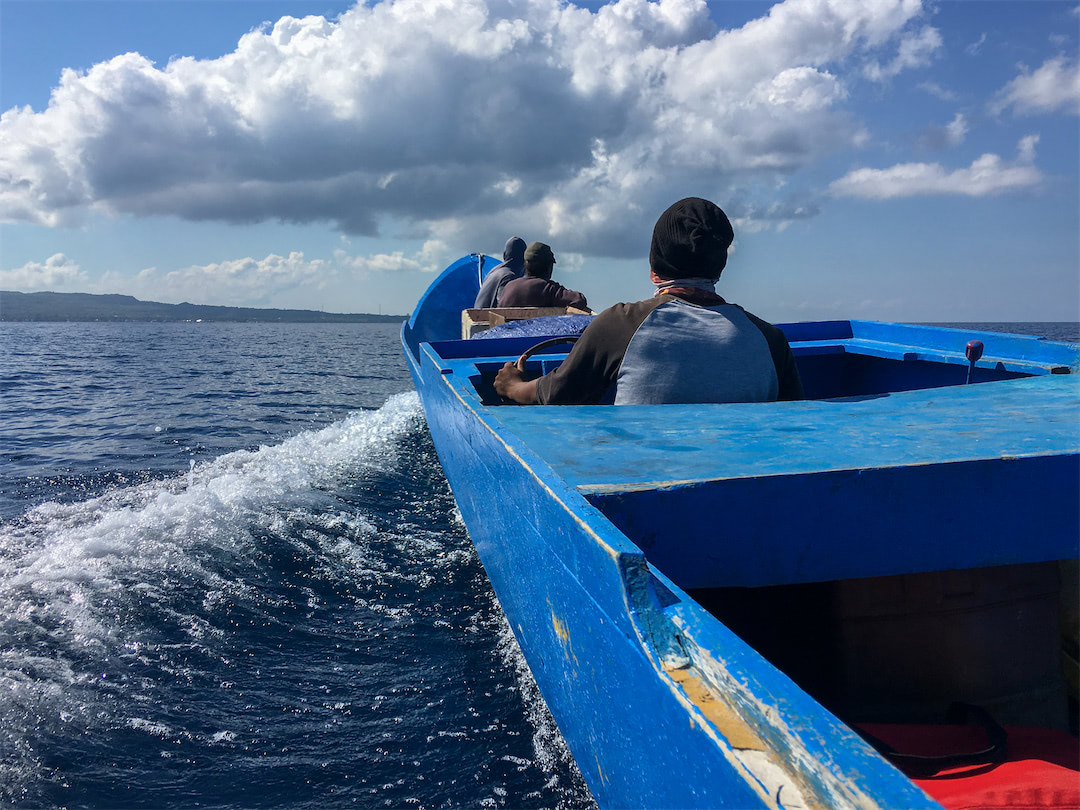
Diving centers on Tomia
Wakatobi Dive Resort
Until the landing strip was built in 2001, the way to the resort led via Makassar and Kendari in the southeast of Sulawesi and then on by ship to Tolondano, the small neighboring island of Tomia, on which the Wakatobi Dive Resort is located.
Since July 2001, getting to the resort has become much easier. The runway built by the Wakatobi Dive Resort is long enough for airplanes from Denpasar to land there.
We were back in Wakatobi in 2001 and were even able to attend the opening of the airport. More than 5000 people celebrated the first landing of an airplane on Tolendano. Many of them had probably never seen an airplane from near before.
Since July 2001, getting to the resort has become much easier. The runway built by the Wakatobi Dive Resort is long enough for airplanes from Denpasar to land there.
We were back in Wakatobi in 2001 and were even able to attend the opening of the airport. More than 5000 people celebrated the first landing of an airplane on Tolendano. Many of them had probably never seen an airplane from near before.
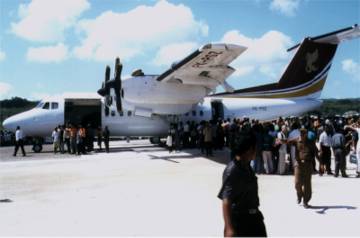
Landing of the first aircraft on Tomia, July 2001

Enthusiastic spectators during the opening of the airport
Originally the resort consisted of a long house with communal facilities and a few spacious, comfortably furnished bungalows.
In the meantime, the Wakatobi Dive Resort has been expanded into a luxury resort. The focus is mainly on the US market. The simplest bungalows cost $ 350 pp, plus $ 195 per day for diving.
European guests are rather put off by the high prices.
In the meantime, the Wakatobi Dive Resort has been expanded into a luxury resort. The focus is mainly on the US market. The simplest bungalows cost $ 350 pp, plus $ 195 per day for diving.
European guests are rather put off by the high prices.
Diving at Wakatobi Dive Resort
The dive center has a large number of well-maintained rental equipment. Electricity is available so underwater lights and flash units can be charged.
The water temperature varies considerably in Wakatobi. From June to the end of August it is just 25 ° C (sometimes less) during the southeast monsoon and you are well advised to travel to Wakatobi with a 5 mm suit during this period. Later in the year the temperatures reach up to 29 ° C. It is advisable to inquire about the conditions in advance.
Visibility in July is 20 m and then later in the year getting better to very good 40 m. The best time to travel is March to the end of May and September to the end of November. Most fish can be seen in the period from June to August. In January / February the monsoon blows directly on the base and it can get uncomfortable.
Oxygen is available on the spacious diving boats with toilets and the dive sites are approached with great precision. Destruction of the reef by uncontrolled anchoring is avoided.
The water temperature varies considerably in Wakatobi. From June to the end of August it is just 25 ° C (sometimes less) during the southeast monsoon and you are well advised to travel to Wakatobi with a 5 mm suit during this period. Later in the year the temperatures reach up to 29 ° C. It is advisable to inquire about the conditions in advance.
Visibility in July is 20 m and then later in the year getting better to very good 40 m. The best time to travel is March to the end of May and September to the end of November. Most fish can be seen in the period from June to August. In January / February the monsoon blows directly on the base and it can get uncomfortable.
Oxygen is available on the spacious diving boats with toilets and the dive sites are approached with great precision. Destruction of the reef by uncontrolled anchoring is avoided.

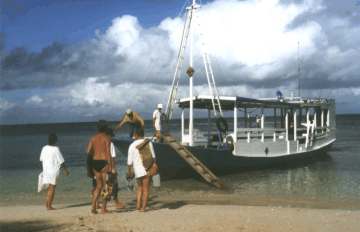

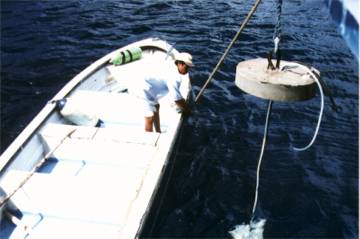
We were involved in the summer (2001) when the buoys began to be set. With the help of these fixed anchorages it should be prevented that schooners anchored off Tolendano destroy the coral reefs with their heavy anchors.
In general, very strict environmental standards apply in Wakatobi. Basically nothing should be touched and wearing gloves is explicitly not desired.
Less well-balanced underwater photographers should therefore leave their equipment at home. Two dive sites are visited by boat every day.
In addition, there is unlimited diving on the house reef.
Less well-balanced underwater photographers should therefore leave their equipment at home. Two dive sites are visited by boat every day.
In addition, there is unlimited diving on the house reef.
Unfortunately, the anchoring of buoys was not continued. In particular, the once much-praised Mari Mabuk and Roma dive sites have suffered a lot from the uncontrolled anchoring of Indonesian cargo boats.
During our dives, considerable damage was evident after several years. It was also noticeable that many gorgonians had died. Are these possibly consequences of underwater photography?
From the Wakatobi Dive Resort, only dive sites in the vicinity are accessible. The walls of Hoga or the almost untouched eastern atolls of the Tukang Besi Archipelago, to which Jacques Cousteau's remark about the best diving area in the world actually referred, can only be reached on a liveaboard. (See my travel report on Jacques Cousteau's base camp)
During our dives, considerable damage was evident after several years. It was also noticeable that many gorgonians had died. Are these possibly consequences of underwater photography?
From the Wakatobi Dive Resort, only dive sites in the vicinity are accessible. The walls of Hoga or the almost untouched eastern atolls of the Tukang Besi Archipelago, to which Jacques Cousteau's remark about the best diving area in the world actually referred, can only be reached on a liveaboard. (See my travel report on Jacques Cousteau's base camp)
Great house reef
The house reef in front of the resort is likely to be one of the best in the world. In principle, it is the entire west coast of the small island of Tolendano on which the resort is located. Under water, the diver encounters a wall densely covered with corals, which begins only 20 m away from the base and always allows new discoveries.
It is an ideal place for night dives or one of the many afternoon dives. The biodiversity in this area is very high. We saw two different types of Pigmy Seahorses (red and yellow variant), various nudibranchs, leaf fish, frog fish and much more.
The house reef may only be dived by guests of the resort. Guests from other diving centers or live aboards are chased away from this dive site.
It is an ideal place for night dives or one of the many afternoon dives. The biodiversity in this area is very high. We saw two different types of Pigmy Seahorses (red and yellow variant), various nudibranchs, leaf fish, frog fish and much more.
The house reef may only be dived by guests of the resort. Guests from other diving centers or live aboards are chased away from this dive site.
Marind Dive Eco Resort
If you have arrived in Tomia by ferry, you will be picked up by Marcel, the Dutch co-owner of the new Marind Dive Eco Resort, at the port of Waha and taken directly to the new resort, which is located only a few kilometers southwest of the port in the small village of Kollo Soha.
Good location
The location itself leaves nothing to be desired. The resort is located on the outskirts of the village, directly on the edge of the rock, about 20 m above sea level. When you look to the west over a small plantation with coconut palms you are looking directly on some of the best dive sites off Tomia. And similar to Hoga the sunsets are spectacular here too.
A diving center is to be built under the palm trees on a site just below the resort. An investor is still being sought for this. At the moment all divers are taken by car or moped to the port of Waha, where a local dive boat is waiting for the guests.
In November 2019, the restaurant with bar and pool table as well as two spacious, tastefully furnished bungalows were completed. The third bungalow was about to be completed. The construction of three more, slightly smaller bungalows is planned.
The garden was also already planted and was diligently watered every day.
A diving center is to be built under the palm trees on a site just below the resort. An investor is still being sought for this. At the moment all divers are taken by car or moped to the port of Waha, where a local dive boat is waiting for the guests.
In November 2019, the restaurant with bar and pool table as well as two spacious, tastefully furnished bungalows were completed. The third bungalow was about to be completed. The construction of three more, slightly smaller bungalows is planned.
The garden was also already planted and was diligently watered every day.
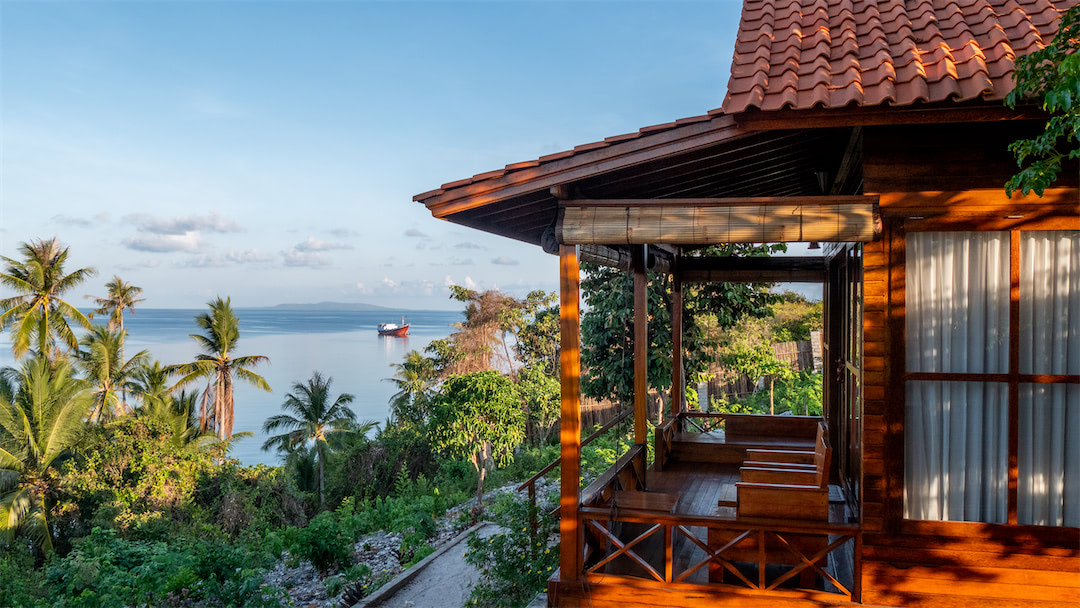

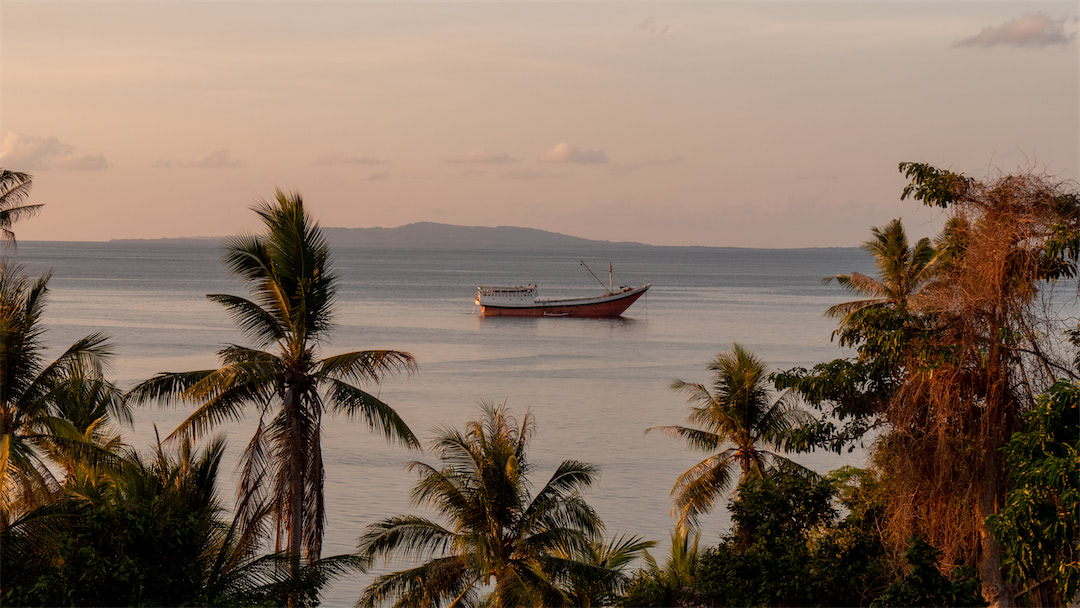
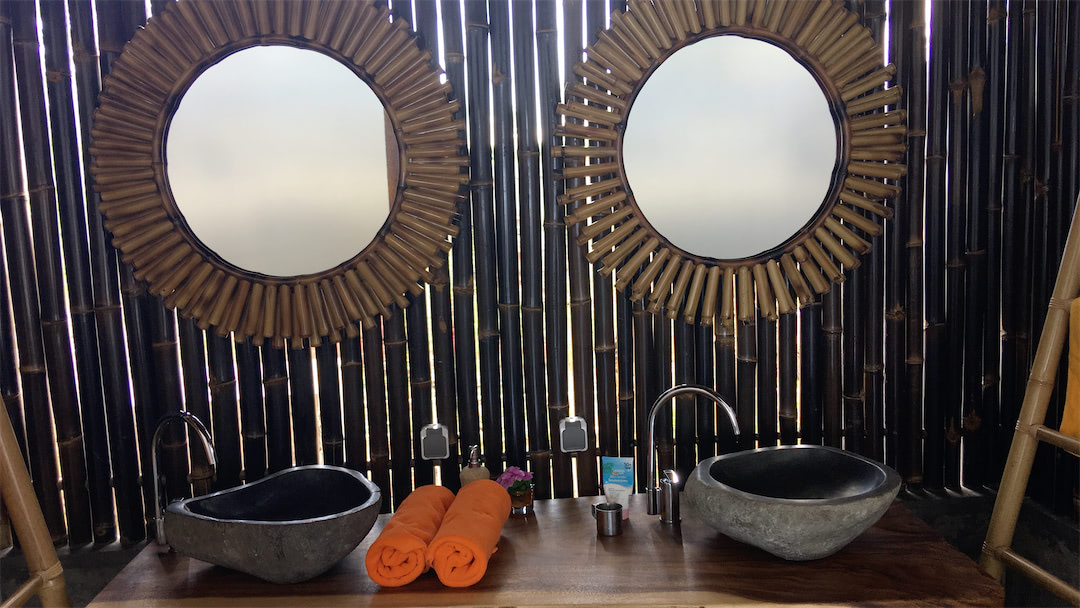



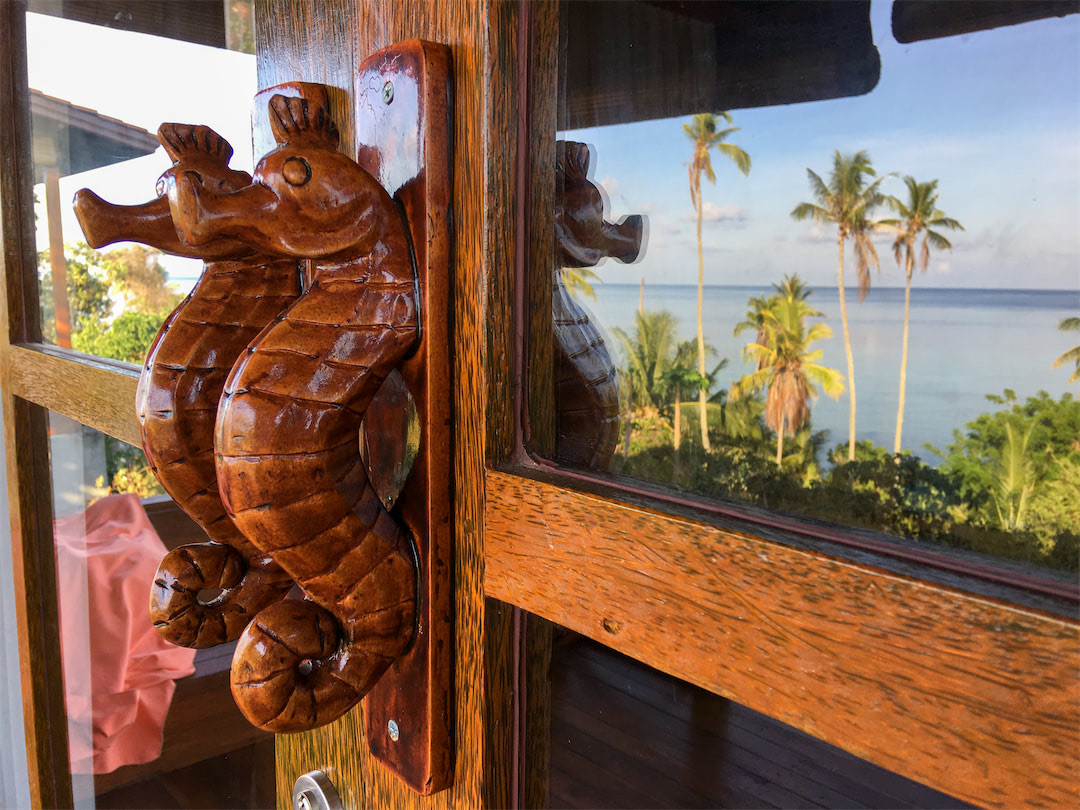

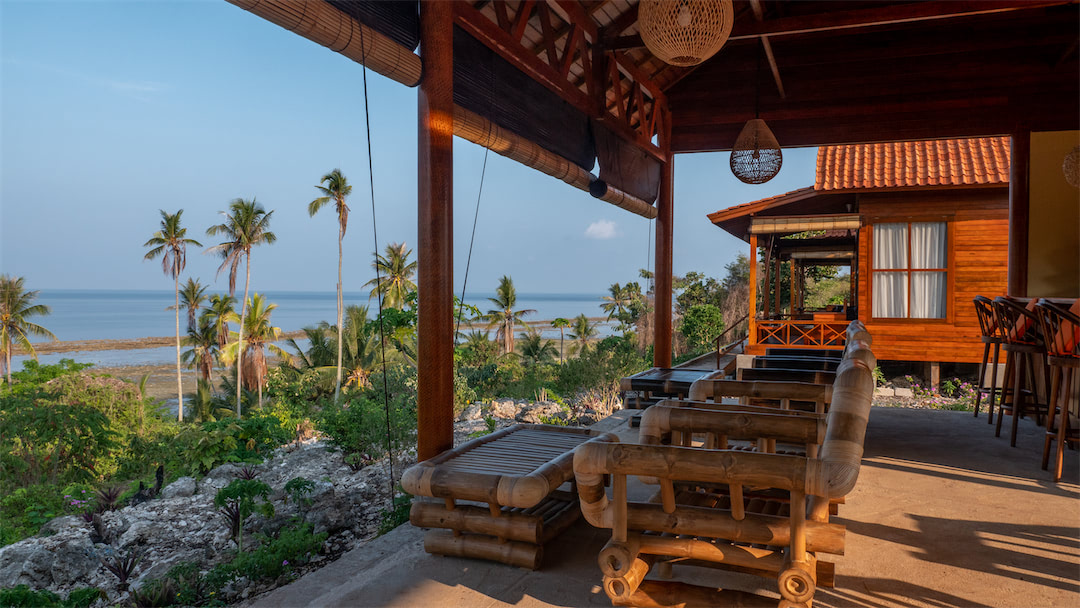
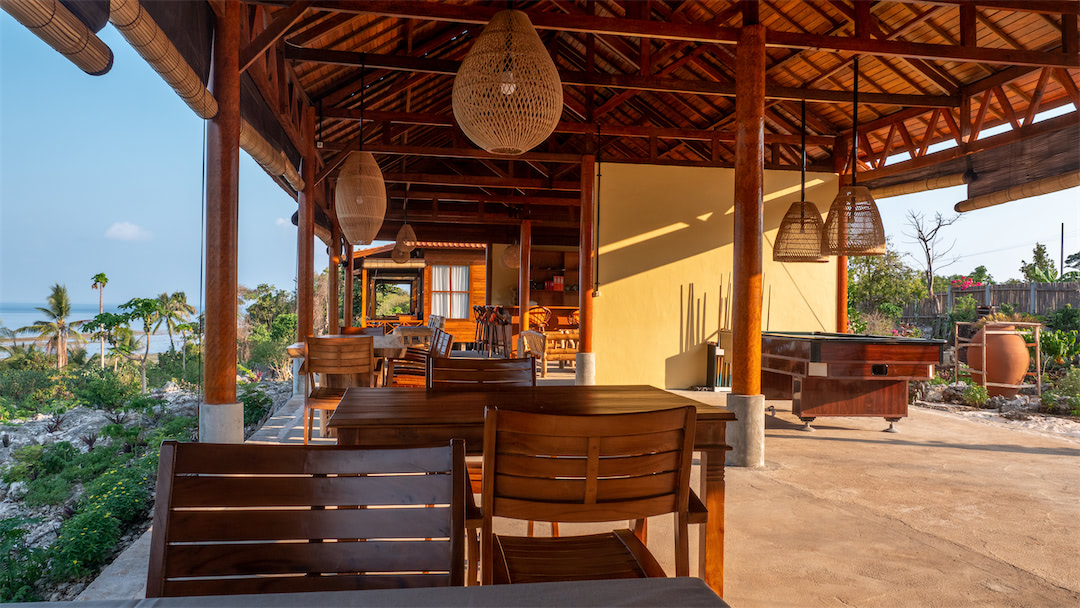

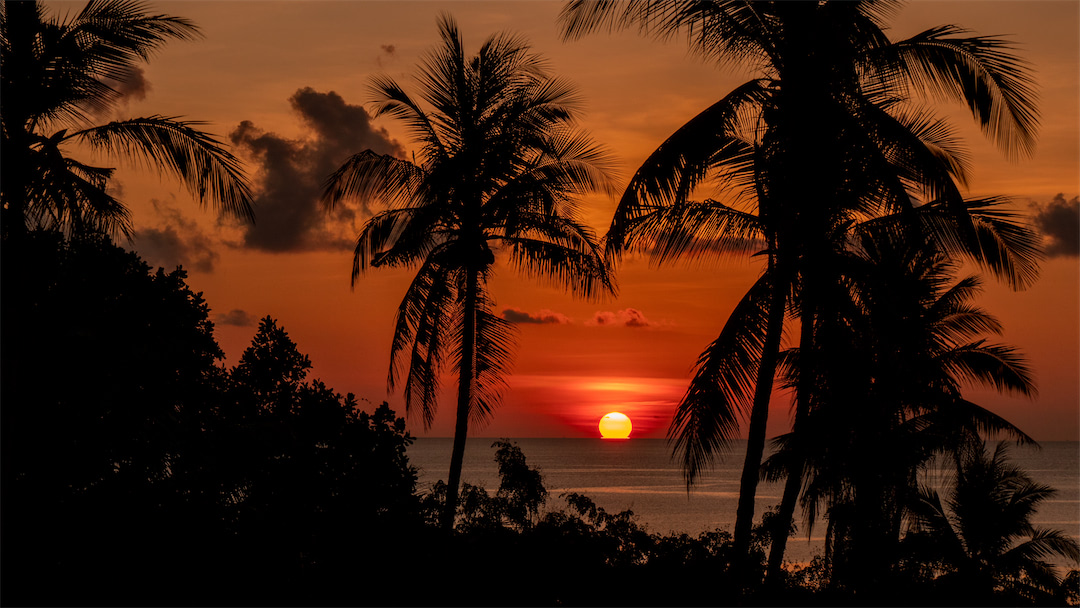
Everything still new
Meals are served in the large restaurant. They are lovingly arranged on the plates and taste good. The dishes used are not always practical. The quantities were sufficient. But I can well imagine that other guests would have liked a little more on their plate. The kitchen works very slowly. Personal training is still required here. As in many other remote areas in Indonesia, it is difficult to find well-trained and hard-working staff also in Wakatobi.
In principle, electricity is available 24 hours a day. During our stay, however, there were blackouts pretty often. Since the two emergency generators were also defective, we often sat in front of the bungalow in the afternoons without electricity. Of course, the slightly undersized air conditioning in the bungalow didn't work either. Because of Tomia's remote location, it often takes weeks for spare parts to arrive on the island.
In principle, electricity is available 24 hours a day. During our stay, however, there were blackouts pretty often. Since the two emergency generators were also defective, we often sat in front of the bungalow in the afternoons without electricity. Of course, the slightly undersized air conditioning in the bungalow didn't work either. Because of Tomia's remote location, it often takes weeks for spare parts to arrive on the island.
The finest sunsets
For a sundowner in front of a spectacular scenery, either the resort's bar or the spacious terraces of the bungalows are the ideal places. We mostly enjoyed the show with a cool Bintang from the terrace of our bungalow because we were the only guests in the resort anyway.
The resort does not have its own beach. If you are looking for a beautiful, white sandy beach, you have to walk a few hundred meters south to Hondue Beach.
Thanks to its location on the outskirts of the village, it was pretty quiet at the Marind Resort. The annoyance from the oversized loudspeakers in the village mosque was also kept within acceptable limits. Every morning around four o'clock, however, the friendly imam woke us up and on Thursday the prayers and chants of the women of the village are broadcast live over the mosque's loudspeakers. We had the impression that the ladies in the mosque found no end to their religious zeal. You should therefore always have a pack of ear plugs next to the bed at night.
The resort does not have its own beach. If you are looking for a beautiful, white sandy beach, you have to walk a few hundred meters south to Hondue Beach.
Thanks to its location on the outskirts of the village, it was pretty quiet at the Marind Resort. The annoyance from the oversized loudspeakers in the village mosque was also kept within acceptable limits. Every morning around four o'clock, however, the friendly imam woke us up and on Thursday the prayers and chants of the women of the village are broadcast live over the mosque's loudspeakers. We had the impression that the ladies in the mosque found no end to their religious zeal. You should therefore always have a pack of ear plugs next to the bed at night.
Diving in Tomia
As already mentioned, the planned diving base does not yet exist. So every morning we drove to the harbor in Waha and then with a spacious dive boat to the dive sites in front of Tomia. There was enough space for camera and personal items. A western toilet with is located in the rear.
Diving is done with 12l bottles. Nitrox was not offered. The crew was helpful and our captain knew the dive sites.
After all, our dive guide was a Padi Divemaster, but didn't show us very much under water. He was obviously not really sure about his duties as a dive guide. In any case, there is still a lot of work to do for a future diving center manager.
Diving is done with 12l bottles. Nitrox was not offered. The crew was helpful and our captain knew the dive sites.
After all, our dive guide was a Padi Divemaster, but didn't show us very much under water. He was obviously not really sure about his duties as a dive guide. In any case, there is still a lot of work to do for a future diving center manager.


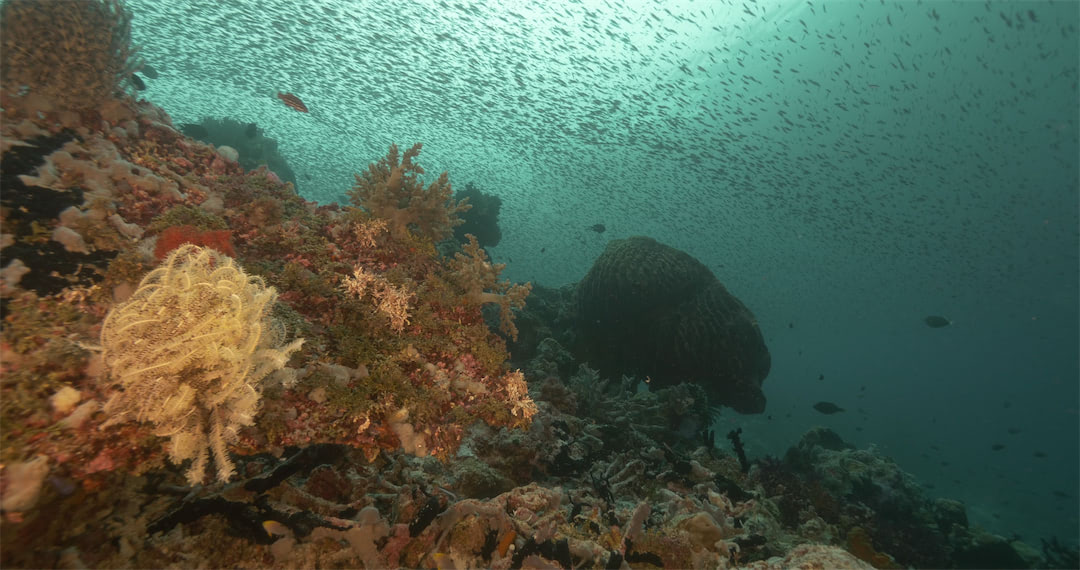

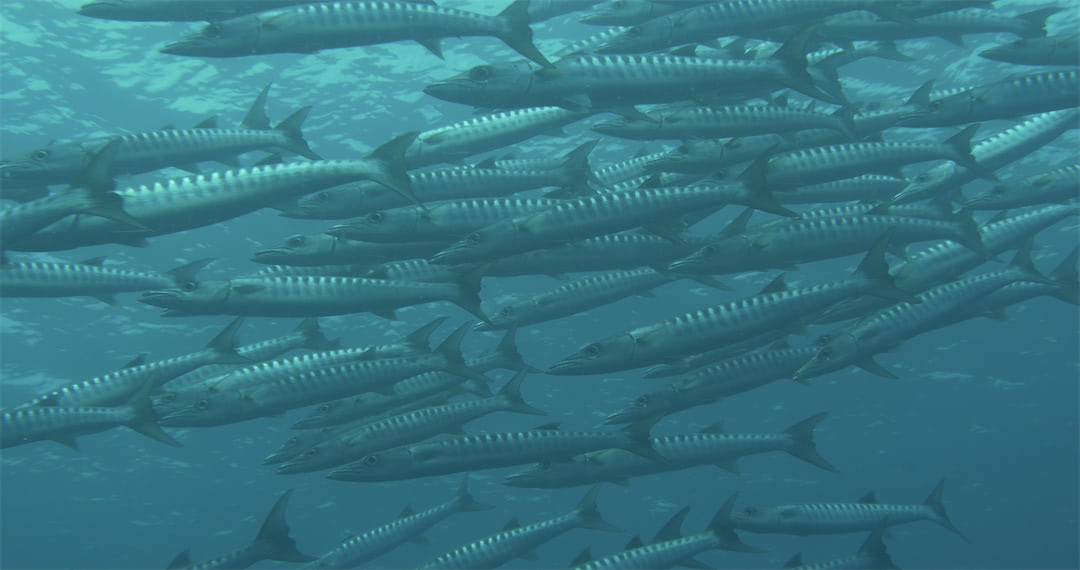
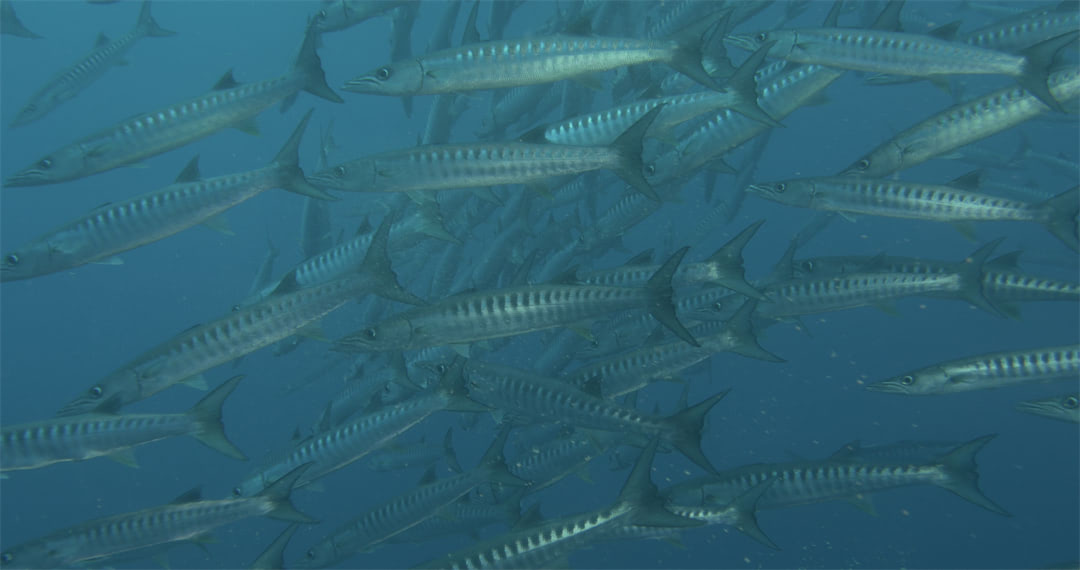



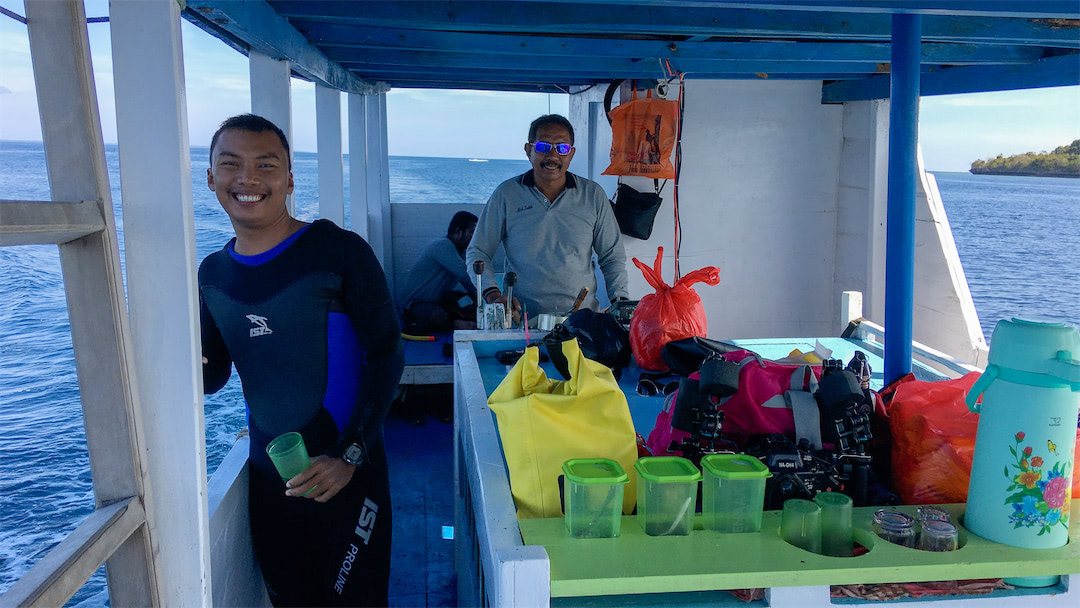
Dive sites in front of Tomia
In principle, you can dive at all dive sites that are also visited by the Wakatobi Dive Resort (WDR), unless a WDR dive boat is already at the dive site. Then you go to another dive site nearby. Which seems to me to be a very sensible rule. During our entire stay on Tomia, this only happened once.
However, the WDR's house reef is excluded from this rule, whereby the resort interprets the definition of house reef very broadly. In principle, it is the entire, approximately 2 km long west coast of the island of Tolondano, separated from Tomia by a narrow sea strait, on which the resort is located.
Here is a small selection of recommended dive sites:
Roma
is a beautiful, varied reef at a depth of 20 to 30 m. The rose is impressive: a formation of funnel corals that are grouped in such a way that they appear to form a huge flower. However, the dive site has suffered severely over the years from over-diving and Indonesian schooners anchoring there.
Mari Mabuk
means let's get drunk and is one of the best dive sites in Wakatobi. The dive site offers an incredible variety of shapes and colors and is a very good place to see pigmy seahorses at several gorgonians. Unfortunately, like Roma, this dive site has also suffered a lot. Today it is just a copy of what we could admire there 20 years ago.
The Blade
is undoubtedly the greatest dive. As the name suggests, it is an underwater ridge that you follow from the anchorage. On both sides of the ridge, which is only a few meters wide at the top, the reef falls almost vertically into the depth. In some places you can find the Wakatobi Goby, a previously unknown Goby species that is apparently only found in this region.
However, the WDR's house reef is excluded from this rule, whereby the resort interprets the definition of house reef very broadly. In principle, it is the entire, approximately 2 km long west coast of the island of Tolondano, separated from Tomia by a narrow sea strait, on which the resort is located.
Here is a small selection of recommended dive sites:
Roma
is a beautiful, varied reef at a depth of 20 to 30 m. The rose is impressive: a formation of funnel corals that are grouped in such a way that they appear to form a huge flower. However, the dive site has suffered severely over the years from over-diving and Indonesian schooners anchoring there.
Mari Mabuk
means let's get drunk and is one of the best dive sites in Wakatobi. The dive site offers an incredible variety of shapes and colors and is a very good place to see pigmy seahorses at several gorgonians. Unfortunately, like Roma, this dive site has also suffered a lot. Today it is just a copy of what we could admire there 20 years ago.
The Blade
is undoubtedly the greatest dive. As the name suggests, it is an underwater ridge that you follow from the anchorage. On both sides of the ridge, which is only a few meters wide at the top, the reef falls almost vertically into the depth. In some places you can find the Wakatobi Goby, a previously unknown Goby species that is apparently only found in this region.
World class diving
During the dives, one highlight followed the other in Tomia. The visibility was even better than the already good visibility off Hoga.
However, the large biomass in the water was outstanding. We were surrounded by large schools of sardines on almost all of the dives, which reminded me of some dives in Raja Ampat or Komodo.
Several times we encountered large schools of barracuda and trevallies, which could be filmed well in the clear water. We also saw large napoleons, humphead parrot fish, bat fish and turtles on most of the dives.
The corals were in an overall satisfactory condition. Coral diversity is great, but less than in other Indonesian hotspots of marine biodiversity.
The protective measures of the Wakatobi Dive Resort have a particularly positive effect on the biomass in Tomia. There are only a few diving areas in Indonesia where you can still see so many fish underwater. For this reason alone, Tomia is worth a visit.
However, the large biomass in the water was outstanding. We were surrounded by large schools of sardines on almost all of the dives, which reminded me of some dives in Raja Ampat or Komodo.
Several times we encountered large schools of barracuda and trevallies, which could be filmed well in the clear water. We also saw large napoleons, humphead parrot fish, bat fish and turtles on most of the dives.
The corals were in an overall satisfactory condition. Coral diversity is great, but less than in other Indonesian hotspots of marine biodiversity.
The protective measures of the Wakatobi Dive Resort have a particularly positive effect on the biomass in Tomia. There are only a few diving areas in Indonesia where you can still see so many fish underwater. For this reason alone, Tomia is worth a visit.
No sharks!
As in Hoga, we didn't see a single shark in the water around Tomia during our stay. Even by Indonesian standards, the shark population in Wakatobi is extremely small and has still not recovered from the excesses of the shark fin mafia in recent decades.
More activities on Tomia
Since we only did two dives a day instead of the recommended three, there was enough time to get to know the area and the entire island. The people on Tomia are friendly and curious, like everywhere in Indonesia. You rarely get away without the obligatory selfies and cell phone photos.


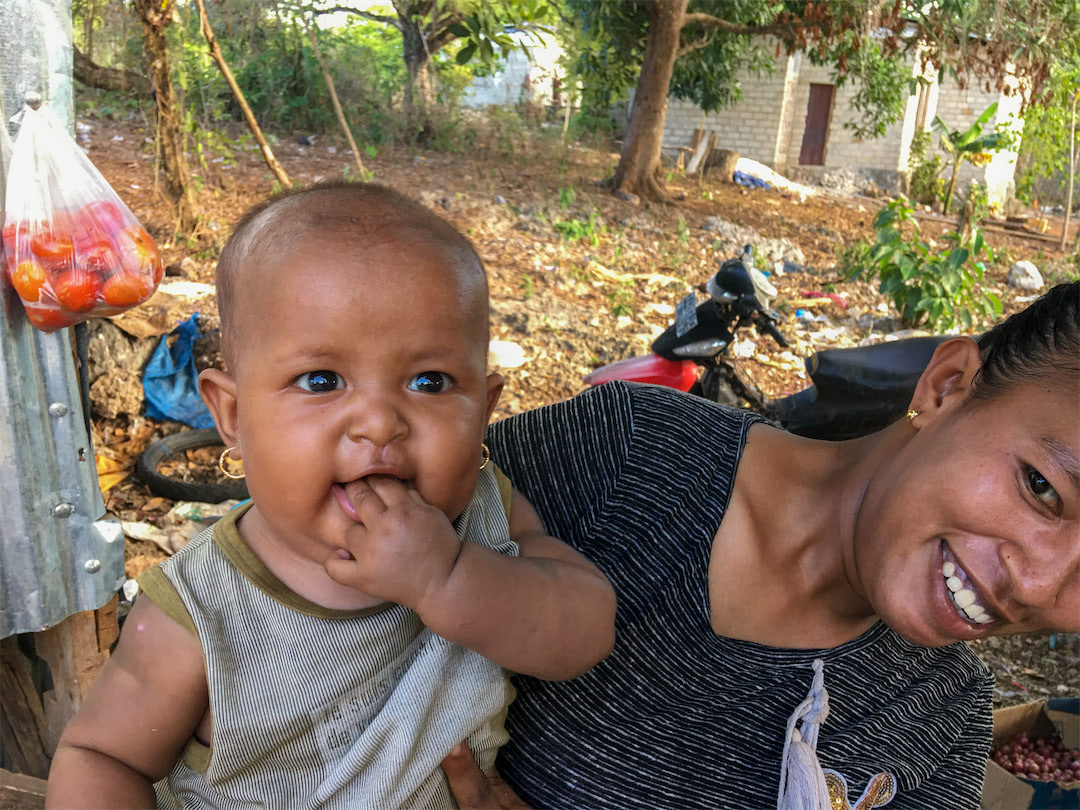
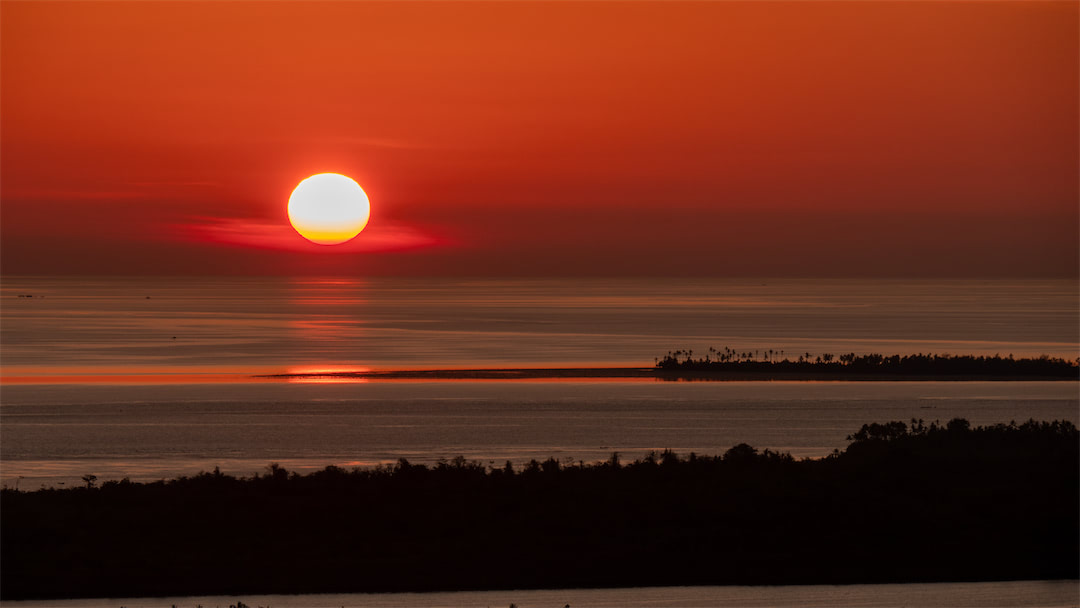
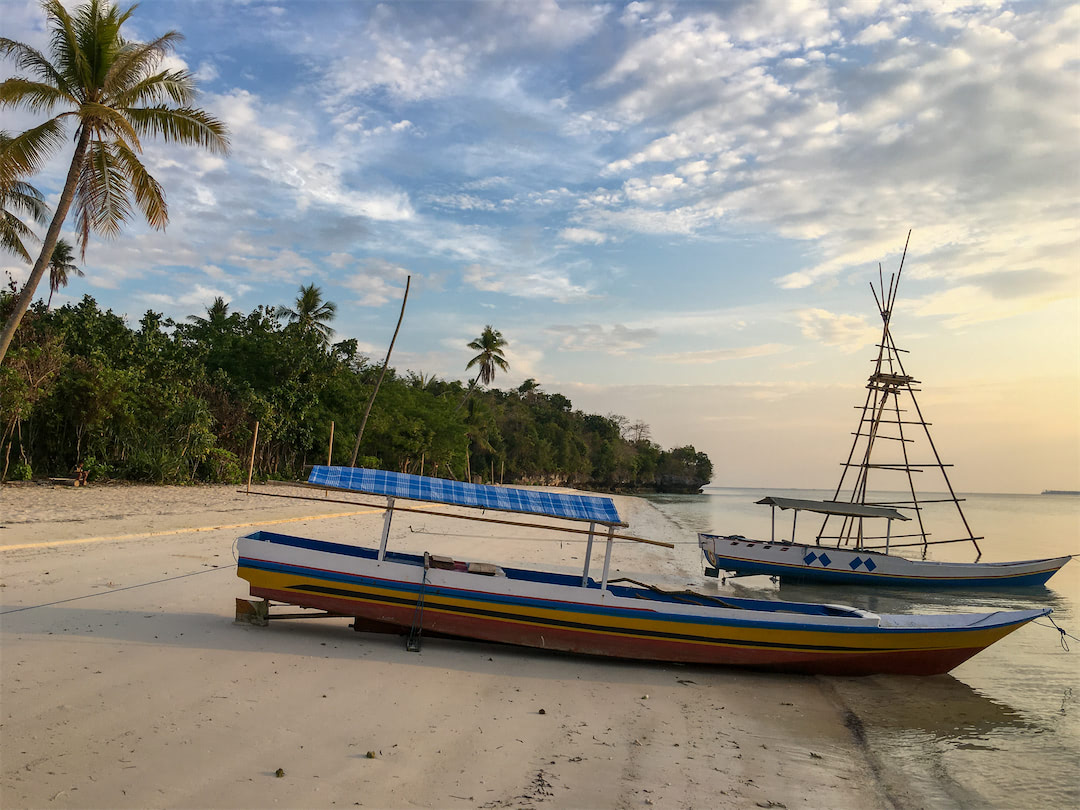
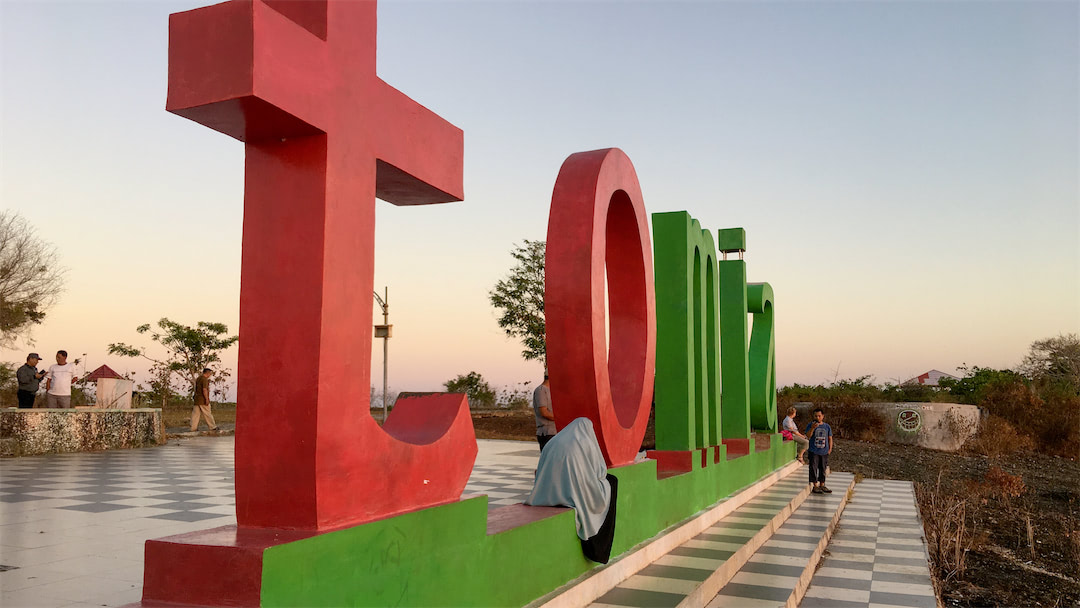


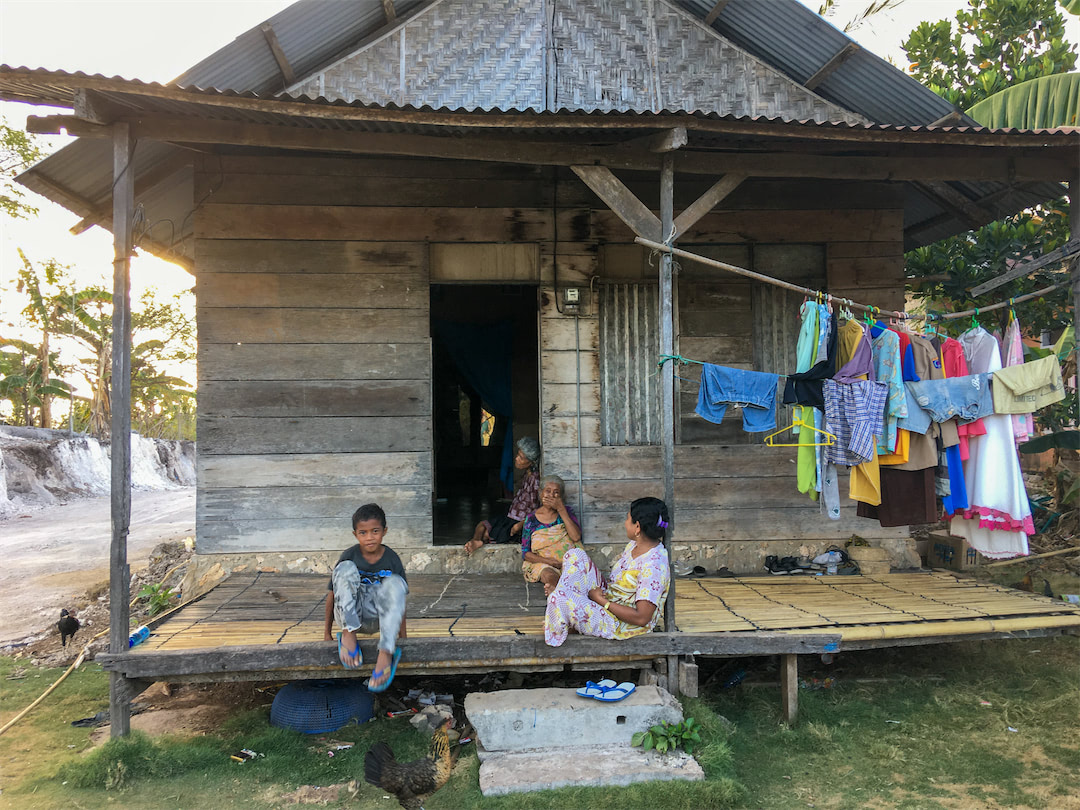
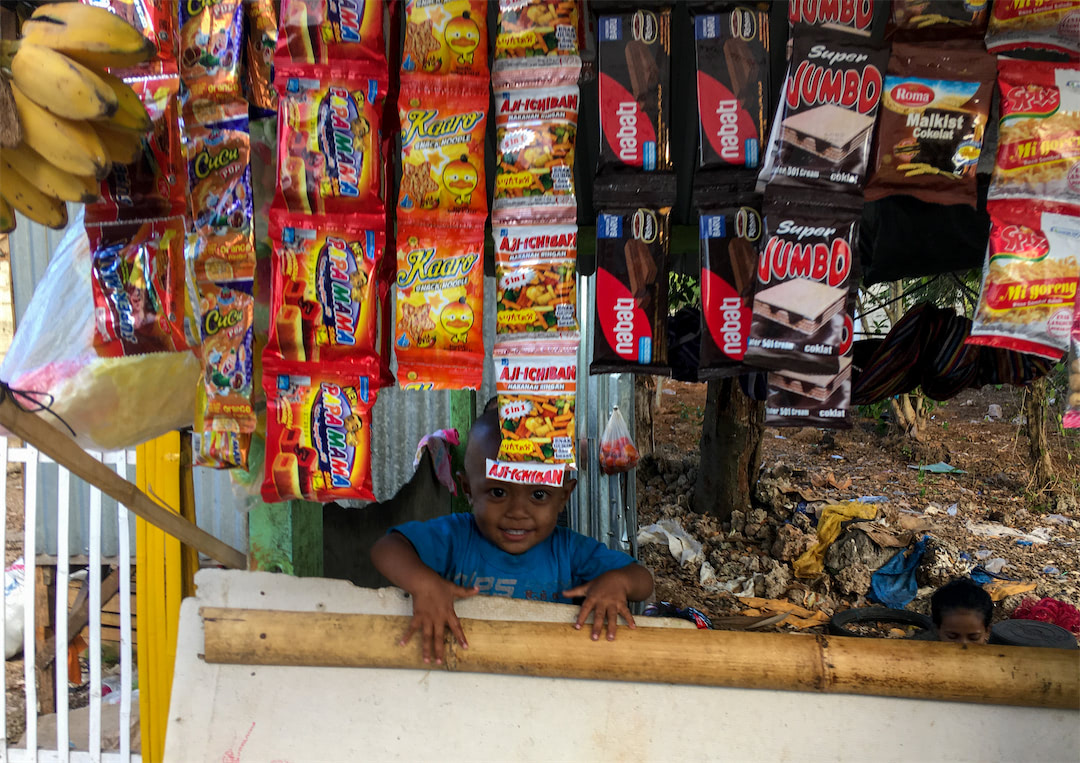
You can drive around the whole island on a motorbike. The road is generally fine. In the south, however, there are longer stretches, where one pothole follows the other. You drive through small villages, sometimes through small forested areas. Again and again there are beautiful views of the sea and offshore islands.
A visit to a high fortress is worthwhile en route. The population withdrew to this fortified position on a ridge during pirate attacks in the past. Old cannons and defenses still bear witness to this warlike past. Benteng Patua can be reached in about half an hour by motorbike from Waha. A worthwhile afternoon outing. Another fortified complex is in the south of Tomia.
A trip to the highest point of Tomia just before sunset is also popular. From there you have a wonderful view of the offshore island Tolendano and the setting sun in the west.
A visit to a high fortress is worthwhile en route. The population withdrew to this fortified position on a ridge during pirate attacks in the past. Old cannons and defenses still bear witness to this warlike past. Benteng Patua can be reached in about half an hour by motorbike from Waha. A worthwhile afternoon outing. Another fortified complex is in the south of Tomia.
A trip to the highest point of Tomia just before sunset is also popular. From there you have a wonderful view of the offshore island Tolendano and the setting sun in the west.
